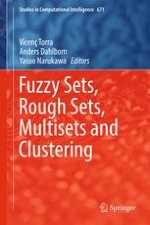2017 | OriginalPaper | Chapter
Using a Reverse Engineering Type Paradigm in Clustering. An Evolutionary Programming Based Approach
Authors : Jan W. Owsiński, Janusz Kacprzyk, Karol Opara, Jarosław Stańczak, Sławomir Zadrożny
Published in: Fuzzy Sets, Rough Sets, Multisets and Clustering
Publisher: Springer International Publishing
Activate our intelligent search to find suitable subject content or patents.
Select sections of text to find matching patents with Artificial Intelligence. powered by
Select sections of text to find additional relevant content using AI-assisted search. powered by
